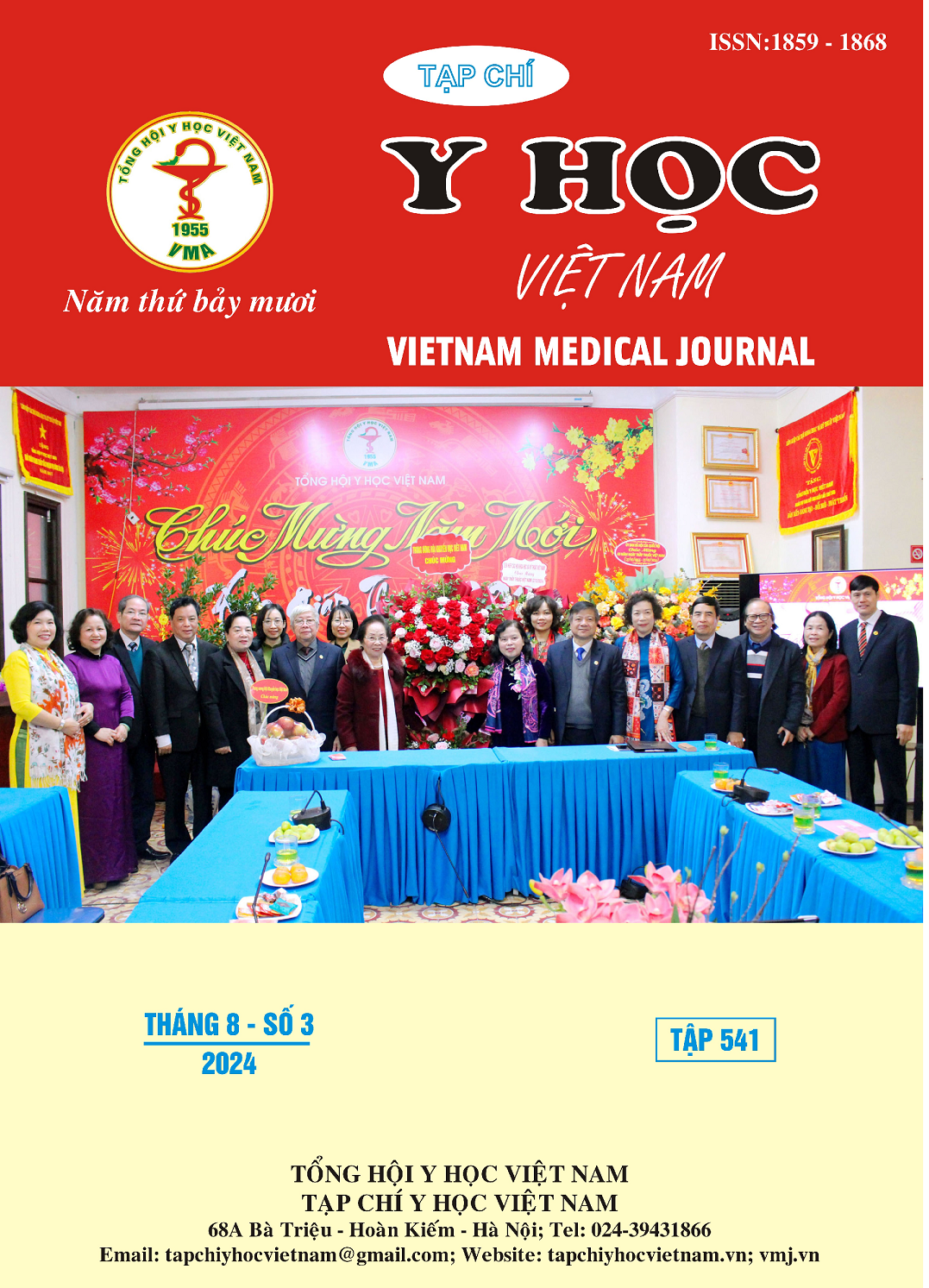ANTIMICROBIAL RESISTANCE OF STREPTOCOCCUS PNEUMONIAE ISOLATED FROM CHILDREN UNDER SIX YEARS WITH RESPIRATORY INFECTIONS AT DUC GIANG GENERAL HOSPITAL IN 2023
Main Article Content
Abstract
Streptococcus pneumoniae is a leading cause of respiratory infections, particularly in young children, and presents significant treatment challenges due to antibiotic resistance. Methods: This cross-sectional study assessed the infection rate and antibiotic resistance profile of S. pneumoniae isolated from children under six years with respiratory infections at Duc Giang General Hospital in 2023. Results: The overall infection rate of S. pneumoniae was 7.7% (421/5453). The infection rate was significantly higher in children aged 1-5 years compared to those under 1 year (OR = 1.67; p<0.01), with the highest prevalence observed in pediatric patients (10.4%). The S. pneumoniae strains exhibited high resistance rates to Clindamycin (96.2%), Tetracycline (90%), and Trimethoprim-sulfamethoxazole (60.2%), and near-total resistance to Erythromycin (99.5%). Conversely, the bacteria showed high sensitivity to Rifampin (99.2%), Chloramphenicol (91.5%), Ceftriaxone (84.8%), Penicillin G (74.2%), and Cefotaxime (68.4%). Notably, S. pneumoniae demonstrated 100% sensitivity to Fluoroquinolones (Moxifloxacin, Levofloxacin), Vancomycin, and Linezolid. Conclusions: The infection rate of S. pneumoniae varies with age and treatment department. Effective antibiotics for treating respiratory infections caused by S. pneumoniae include Levofloxacin, Moxifloxacin, Linezolid, and Vancomycin.
Article Details
Keywords
Streptococcus pneumoniae, antimicrobial resistance, Duc Giang General Hospital.
References
2. Bộ Y tế, Hướng dẫn thực hành kỹ thuật xét nghiệm Vi sinh lâm sàng. Nhà xuất bản Y học, Hà Nội., 2017.
3. Đỗ Ngọc Hoài, Nghiên cứu sự nhạy cảm với kháng sinh của một số chủng vi khuẩn gây viêm đường hô hấp cấp ở trẻ em dưới 6 tuổi tại Bệnh viện Nhi Thanh Hóa 2009-2014 Tạp chí Nghiên cứu và thực hành Nhi khoa, 2020. 4: p. 58-64.
4. Lee, J.K., et al., Changes in the Serotype Distribution among Antibiotic Resistant Carriage Streptococcus pneumoniae Isolates in Children after the Introduction of the Extended-Valency Pneumococcal Conjugate Vaccine. J Korean Med Sci, 2017. 32(9): p. 1431-1439.
5. Trần Quang Khải, Tỷ lệ phân lập, đề kháng kháng sinh của Streptococcus pneumoniae gây viêm phổi nặng ở trẻ em Cần Thơ. Tạp chí Nghiên cứu y học 145(9) - 2021, 2021: p. 229-239.
6. Hoàng Tiến Lợi, Tính nhạy cảm kháng sinh và kết quả điều trị viêm phổi phế cầu tại Bệnh viện Nhi Thanh Hóa năm 2021-2022. Tạp chí Y học Việt Nam tập 516- tháng 7- số 2-2022, 2022: p. 276-279.
7. Shan, W., et al., Risk Factors for Severe Community-aquired Pneumonia Among Children Hospitalized With CAP Younger Than 5 Years of Age. Pediatr Infect Dis J, 2019. 38(3): p. 224-229.
8. Nguyễn Đăng Quyệt, Tình hình đề kháng kháng sinh của phế cầu và kết quả điều trị viêm phổi do phế cầu ở trẻ em tại Bệnh viện Nhi Trung ương. Tạp chí Nghiên cứu và Thực hành Nhi khoa, 2021.


